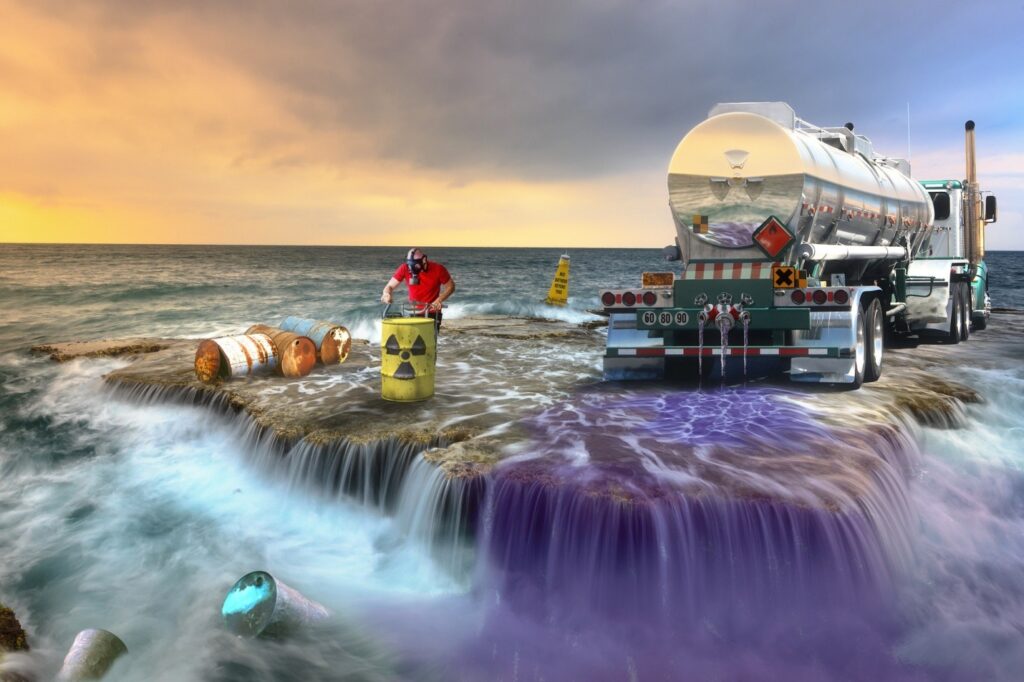Reclaim Waste Fundamentals Explained
Wiki Article
The Single Strategy To Use For Reclaim Waste
Table of ContentsThe Only Guide for Reclaim WasteThe Definitive Guide for Reclaim WasteSome Known Facts About Reclaim Waste.5 Easy Facts About Reclaim Waste Described4 Easy Facts About Reclaim Waste Shown
Explore the kinds, events, and types of fluid waste. Residential sewage waste describes the waste and products from a domestic sewage-disposal tank. This sort of waste is produced by humans in residences, institutions, and various other buildings. This only consists of sewage-disposal tanks that have a drainpipe field. The proper monitoring and disposal of residential sewage waste call for liquid waste to be moved to a sewage therapy plant where the appropriate approaches and devices are related to detoxify and throw away waste.
Business waste commonly consists of potential dangers, such as combustible materials or a combination of liquid and solid waste items, and requires a much more innovative and in-depth disposal procedure. The disposal of commercial waste normally involves the filtration of waste prior to transportation to guarantee secure and proper disposal. Industrial waste is developed from byproducts and runoff of commercial procedures and manufacturing.
This kind of waste can not utilize the very same sewer management transportation or processes as septic or commercial fluids. The hazardous waste administration procedure calls for the inspection and testing of liquid waste before it goes through the disposal procedure (liquid waste removal). Drainage waste is the liquid waste that comes from overflow and excess stormwater in extremely inhabited areas or cities
Drainage waste can create contamination and flooding if not managed appropriately. Making sure proper waste monitoring can protect against calamities and minimize environmental harm.
The Reclaim Waste Diaries
Get in touch with PROS Services today to find out about our waste administration and disposal services and the appropriate ways to take care of the liquid waste you create.(https://trello.com/w/reclaimwaste1/)This supposed 'wastewater' is not only a crucial resource however, after treatment, will certainly be released to our land, rivers or the sea. Utilized water from toilets, showers, bathrooms, kitchen sinks, laundries and commercial processes is recognized as wastewater.

water used to cool down machinery or clean plant and tools). Stormwater, a type of wastewater, is drainage that streams from farming and urban locations such as roofs, parks, yards, roadways, paths and rain gutters right into stormwater drains, after rain. Stormwater streams untreated straight to neighborhood creeks or rivers, ultimately getting to the sea.
All About Reclaim Waste
In Queensland, many wastewater is treated at sewer therapy plants. Wastewater is transported from domestic or industrial sites with a system of drains and pump terminals, referred to as sewage reticulation, to a sewer therapy plant. Neighborhood federal governments build, maintain and operate most sewage therapy plants. Operators are licensed under the Environmental Management Act 1994 to discharge treated wastewater at an acceptable environmental standard right into rivers.The Division of Natural Resources encourages local governments concerning handling, operating and keeping sewage systems and treatment plants. In unsewered areas, local federal governments might require householders to install specific or home sewer treatment systems to deal with residential wastewater from bathrooms, kitchen areas, shower rooms and laundries. The Department of Natural Resources authorises making use of home systems when they are shown to be effective.
Many stormwater receives no treatment. In some brand-new neighborhoods, therapy of some stormwater to eliminate clutter, sand and gravel has actually started using gross contaminant traps. Wastewater treatment occurs in four phases: Eliminates solid issue. Larger solids, such as plastics and various other objects incorrectly discharged to sewage systems, are gotten rid of when wastewater is passed through screens.
Wastewater then streams into huge tanks where solids settle and are eliminated as sludge. Grease and residue are skimmed from the surface. Makes use of little living organisms referred to as micro-organisms to damage down and get rid of continuing to be liquified wastes and fine bits. Micro-organisms and wastes are incorporated in the sludge. Removes nitrogen and phosphorus nutrients that can trigger algal blossoms in our waterways and intimidate aquatic life.
What Does Reclaim Waste Mean?
Nutrient removal is not offered at all sewage treatment plants because it requires pricey specialized tools. Clear fluid effluent created after treatment might still have disease-causing micro-organisms - liquid waste disposal.
Many wastewater flows right into the sewerage system. Under the Act, neighborhood federal governments administer authorizations and licences for eco appropriate tasks (Ages) involving wastewater launches that might have a neighborhood impact.
The Best Guide To Reclaim Waste
Surveillance provides factual information regarding water high quality and can verify that permit problems are being fulfilled. The details gotten through surveillance gives the basis for making water high quality decisions.Report this wiki page